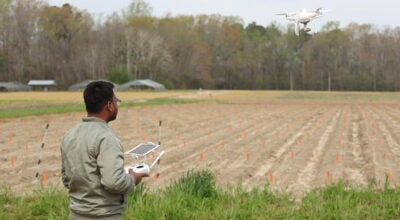City’s air grade improves
Published 6:50 pm Saturday, May 21, 2016
The grade for Suffolk’s air quality has improved, but more work remains to be done, according to a recent report from the American Lung Association.
The city received a “C” for the quality of its air, up from last year’s “D” despite more stringent standards.
“Why you’re most likely seeing improvements is because of the success of the Clean Air Act and its associated regulations,” said Jennifer Kaufer, healthy air campaign coordinator for Virginia.
The grade is based solely on the city’s ozone pollution. For particulate matter — the kind of poor air quality that comes from, for example, exhaust smoke or wildfires — there was not enough data on which to base a grade.
The data used to calculate the report are from 2012 to 2014.
The city had five “orange days” during the reporting period — days when the air quality is unhealthy for sensitive groups, including children, older adults and those with asthma, COPD, diabetes or cardiovascular disease.
The good news is that Suffolk had no red or purple days, when the air quality would have been considered unhealthy or very unhealthy, respectively, for all residents.
Great strides have been taken since 20 years ago, when there were almost 40 more days of unhealthy air quality.
“Over half of all Americans are living in communities that experience bad air quality days,” Kaufer said.
She said citizens can help protect air quality and improve Suffolk’s grade.
“Let your decision makers know you care about a strong Clean Air Act,” Kaufer said. “Make sure the Environmental Protection Agency continues to have the ability to protect our health by regulating air quality.”
Other tips to protect yourself and the community, according to the American Lung Association’s website:
Check daily air pollution forecasts in your area. Download the American Lung Association’s State of the Air app on your mobile device. Other sources include local radio and TV weather reports, newspapers and online at airnow.gov.
Avoid exercising outdoors when pollution levels are high. When the air is bad, walk indoors in a shopping mall or gym or use an exercise machine. Limit the amount of time your child spends playing outdoors if the air quality is unhealthy.
Always avoid exercising near high-traffic areas. Even when air quality forecasts are green, the vehicles on busy highways can create high pollution levels up to one-third of a mile away.
Use less energy in your home. Generating electricity and other sources of energy creates air pollution. By reducing energy use, you can help improve air quality, curb greenhouse gas emissions, encourage energy independence and save money.
Encourage your child’s school to reduce school bus emissions. To keep exhaust levels down, schools should not allow school buses to idle outside of their buildings.
Walk, bike, carpool or take the bus. Combine trips.
Don’t burn wood or trash. Burning firewood and trash are among the major sources of particulate pollution (soot) in many parts of the country.
Use hand-powered or electric lawn-care equipment, rather than gasoline-powered. Old two-stroke engines like lawnmowers and leaf or snow blowers often have no pollution control devices. They can pollute the air even more than cars, though engines sold since 2011 are cleaner.
Don’t allow anyone to smoke indoors, and support measures to make public places tobacco free.
Find more information at www.lung.org.






